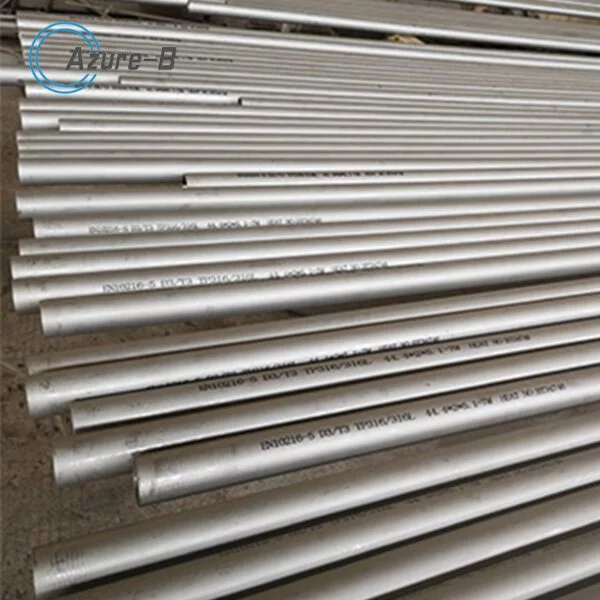Galvanized Pipe for Water: Safe, Durable Plumbing that Stands the Test of Time
Whether you’re building a new house, expanding your farm’s irrigation system, or replacing the old pipes in your family cabin, galvanized steel water pipe offers corrosion resistance, health safety, and lasting value unmatched by other materials. While copper grabs the glory for residential plumbing, don’t overlook rugged galvanized pipe for reliable water transfer on a budget. This guide has everything you need to know about galvanized water pipe sizing, treatment, approved uses, and more!
What Makes Galvanized Pipe Suitable for Water?
Hot-dipped galvanized steel gets its name from the zinc coating applied to ward off corrosion. By sacrificing itself, this protective zinc barrier staves off rust far longer than bare steel, earning decades of use even buried underground or exposed to weather. Rather than paying a premium for short-lived copper, galvanized steel pipe delivers safety, strength, and longevity on a budget.
Galvanized coatings also lend some degree of UV resistance compared to bare steel, allowing use above ground. And unlike lead or copper components that accumulate toxic levels in drinking water over years of contact, galvanized steel won’t taint your water supply. Just beware that aggressive water can still leach iron and minerals over time.

5 Key Traits of Galvanized Water Pipe
Here are the top functional benefits that make galvanized steel an efficient, trusted carrier of water across agricultural, industrial, and residential settings:
•Corrosion & Rust Resistance – The protective zinc coating enables direct soil contact without deterioration. Plus, it shrugs off moisture, humidity and even salt atmospheres.
•Non-Toxic Transport – Unlike copper or lead, galvanized coatings prevent dangerous heavy metal leaching as water travels through.
•High Strength & Rigidity – Pound for pound, steel pipe withstands crushing loads far greater than plastic without distortion issues under pressure.
•Standard Sizing – Galvanized pipe adheres to sizing standards for reliable compatibility with threaded fittings. No surprises!
•Widespread Availability – As a high-demand product, galvanized pipe is stocked at hardware stores and steel suppliers across every farm community.
What are the Approved Uses for Galvanized Water Pipe?
Contrary to popular belief, galvanized pipe remains approved for potable water delivery from municipal supplies in many areas per IPC and UPC plumbing codes. However, there are restrictions residential builders should understand before specifying galvanized over copper:
•Limited to Underground Use Only – If buried below frost lines, galvanized pipe enjoys cool, stable temperatures that minimize mineral leaching from coatings.
•Mandatory Pre-Treatment – Whether new or recycled, all galvanized water pipe must be “pickled” with phosphates to line the inner walls and prevent leaching of iron or manganese into supply lines over the first several months of use. This passivation process is critical!
•Size Limits for Residential Water – Codes explicitly prohibit galvanized pipe smaller than 1″ diameter for in-home potable plumbing due to increased surface area contact relative to flow volumes. Larger service lines are accepted.
Following proper treatment and handling procedures, galvanized steel pipe serves communities across North America with clean water delivery for generations. Check regional plumbing codes for approved applications.
Choosing the Right Galvanized Pipe Size
Galvanized steel water pipe comes in a range of diameters to suit different flow demands. Follow these guidelines for sizing:
•Service Lines or Main Feeds – 3/4″ to 2″ pipe handles connections from municipal water meters or ground wells to the home’s main line. Bury below local frost lines.
•In-Home Distribution – 1″ to 2″ diameter provides ample volume for multiple fixtures while meeting safety codes.
•Farms & Commercial – 1″ to 6″ galvanized pipe transfers water for irrigation systems, livestock, processing lines, fire suppression lines, etc per pressure and volume needs.

Pro Tips for Working With Galvanized Water Pipe
While DIY-friendly, installing galvanized water lines has nuances. Here are expert tips:
•Carefully calculate flow rates needed, then spec pipe diameters and pressure ratings with at least 20% margin. Undersized pipe causes major headaches!
•When threading and cutting, work slow with proper lubrication – galvanized coatings can rapidly dull blades which then chew, rather than slice, the pipe. Deburr thoroughly.
•All pipe ends must be re-galvanized with brush-on coating to prevent interior corrosion from exposed steel. Don’t skip this step!
•For long pipeline projects, use rolled grooved pipe with flexible couplings instead of threading every single joint.Far faster assembly.
•Test all system joints under pressure to check for leaks before backfilling or enclosing pipe sections. It’s worth the effort!
Thanks to modern zinc treatments and water-safe composition, galvanized steel pipe pulls triple duty: shielding our drinking water from toxins, resisting corrosion to keep maintenance at bay, and delivering enough brute strength for expansive rural networks. While no solution is forever, galvanized steel’s life expectancy of 50 years or more lets you install with confidence. Just mind the details for optimal performance!

